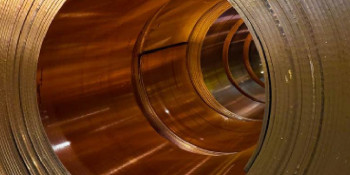Q&A Forums
Ice build-up on my spray foam Post New Topic | Post Reply
| Author | Comments |
|---|---|
|
Amit Bharj
Posted: Jan 06, 2011 08:57 PM
|
Ice build-up on my spray foam
Hello everyone, I am a homeowner who is experiencing a few issues with my spray foam insulation. We decided to choose spray foam after we noticed water puddles near our basement walls that had formed once it began to warm up after winter. Our basement is unfinished and is insulated using fiberglass. After this we began to look into spray foam insulation. We ended up going with polar foam 7300 (a closed cell foam) and had our rim joists done as well as 1-1.5 inches on all the walls. We were planning to use a hybrid insulation, combining spray foam with fiberglass insulation. The reason was to save money and because those who had done the hybrid insulation were having good results. A few days after having our walls done I put up some of the fiberglass sheets. They were up for 2 days and I went to take a look behind them and found a little bit of frost in one area on the foam, as well as some condensation on the foam in another area. Everywhere else was fine except for these two locations. I was wondering if any of you have had some experience with this or could suggest a solution for my situation. Thank you in advance for all your input! |
|
Brian Bothun
Posted: Jan 06, 2011 11:45 PM
|
Tear out the fiberglass and get everything completely dried out and have a contractor come in and spray another 2 inches. One inch of closed cell foam is not a vapor barrier. |
|
Amit Bharj
Posted: Jan 07, 2011 12:10 AM
|
I still plan to put up the poly like you would if you just did fiberglass insulation. Only in my situation, I have the foam and the fiberglass to keep the walls warmer |
|
jimcoler
I have over 10 years of experience specifying and installing open and closed cell spray foam. I've sold my business but I'm still selling for the new owners and consulting on large and custom specific jobs. I've expanded my knowledge into t Posted: Jan 07, 2011 06:13 AM
|
winnipegger, I agree that spray foam is the best option, but I think you need to add more than 1" and don't put the fiberglass in on the inside!!!! This is a disaster waiting to happen. You see fiberglass companies have been down 40-60% in the past year to two and they want to keep their manufacturing equipment up and running. So, they are promoting flash and batt installations. This does not account for the air that can pass through the fiberglass and condense on the foam or adjoining substrates (ie - wood studs). So let's look at the principle of condensation - whcih is what is occurring with your frost and moisture. Warm/Moist air sees a cold surface and wants to warm it up so it shares it's heat with the cold surface. This lowers the temperature of the air and lowers the capacity of moisture it can hold! So, therefore you get condensation on the cold surface. So, it's more important to be an air barrier. Then you have a warm surface with warm air around it. So, I would also no put up poly on the surface of the wall!!! Again, the principle is to design to keep the water out, but assume you'll fail and let it out when it gets in!!! So, putting poly up on the wall doesn't let it out when it gets in!! So, I would say your best option is to have another foam company come in and spray at least 2" of closed cell foam or 3" of open cell and call it good! You don't need more than that!I personally recommend the use of open cell foam because wood is also open cell and it will expand and contract with the expansion and contraction of the wood!It will also provide more surface area for moisture to absorb into rather than drive that moisture to just the studs. I've used closed cell in the past and had problems long term with it cracking and splitting along the studs. So, just my two cents! Jim |
|
mason
Posted: Jan 07, 2011 08:47 AM
|
Good advice from our loyal readers. You do need a sufficient thickness of closed cell foam to effectively insulate the wall to keep the interior wall temperature above the dew point temperature. But, also consider ways to reduce the humidity in the basement. Consider that water may be coming from the floor or the foundation. Be sure there is a drainage tile system around the foundation and that the floor has an adequate vapor retarder. Is there anything in the basement that creates additional humidity such as a washer and dryer? If so, be sure to mechanically vent them to the outside. |
|
Dan Beecher
Posted: Jan 07, 2011 10:45 AM
|
Looking at your moniker I am assuming you are from Winnepeg. I am a spray foam contractor in North Dakota. I agree that the 1" is not enough. Around here we typically spray 3" in the rims, 2" or 2.5" to bsmt walls above grade and 2" below grade. I agree with Mason, sounds like you have something else going on as well creating moisture down there. Relative humidity should be at its lowest during the cold winter months, thus not a lot of moisture in the air by itself. Did you set the walls a little ways away from the foundation to allow the spray foam to get behind the studs or is it a wood foundation? One last thing, take a small paring knife or something sharp and stick it in the areas you are seeing the frost. How thick is the foam there, I would bet it is thinner than the rest of the wall. Just my 2 cents. |
|
John Shockney
Posted: Jan 07, 2011 10:58 AM
|
Hi Winnipegger Jim and Mason hit the nail on the head. Not enough foam!! I have a very good document from Johns Manville (a large fiberglass manufacture) that gives detailed requirements for the hybrid systems including zone maps that I can email to anyone wanting a copy just send me an email requesting it to airpro@gotsky.com Also in a basement you don’t need as much insulation below the frost line because the dirt outside remains relatively warm compared to the outside air temp. Hope this helps Airpro |
|
Amit Bharj
Posted: Jan 07, 2011 12:51 PM
|
Thanks to everyone for all your advice. The studs are away from the walls about 3-4 inches. The basement was deep poured so we have 9 foot ceilings and it seems as though the part of the foundation above ground is what is giving us the problem which is what airpro is saying. I will give my contractor a call, do you think I should go for another inch to make it 2 inches or just go for 3 inches? I am on a budget for my basement, but I also understand the importance of doing the insulation right. Thank you all once again! |
|
Daniel X
Posted: Jan 07, 2011 09:16 PM
|
I realize the purpose of this board and the SPFA you US folks have is to promote foam as the end-all-be-all.... But I have to disagree here. Spraying foam on a wet wall in the basement is NOT a solution, its a band aid for a MUCH bigger problem. The PROPER way to fix this problem likely involves excavation around the perimeter of the home, and will be very expensive. AFTER YOU HAVE FIXED THE MOISTURE PROBLEM then you may consider insulating the wall. |
|
Dan Beecher
Posted: Jan 07, 2011 10:52 PM
|
The owner states the problem only showed up once it got warmer and the puddles showed up on the floor with it being insulated with fiberglass. So one would imagine that if the same thing is happening with 1" of spray foam on the wall, thats what was happening with the fiberglass on it. If he is indeed getting the moisture from infiltrating water you are correct, fix the problem on the outside, but from what he has told us I don't think any of our advise was wrong. Sounds like a condensation problem to me. |
|
quentin
Posted: Jan 08, 2011 10:26 AM
|
Considering how far north you are, I would go for the 3 inch total. We are only in Ohio and I refuse to do less than 2inchs to make sure that we do not see this issue. Many here are doing that whole flash and batt with only .5 to 1inch of foam and the home owners will pay for it later on with mold and other issues. The worst part is I have already see the people they are doing this two blaming the foam and not the poor job by the contractors. |
|
mason
Posted: Jan 08, 2011 10:55 AM
|
I would do some modeling using humidity in the basement and the outside and interior temperatures. But I agree, you probably would need 3 inches. Particularly with fiberglass being added to the foam. The fiberglass will insulate the foam causing it to be a little cooler at the fiberglass/foam interface. |
|
Amit Bharj
Posted: Jan 08, 2011 12:34 PM
|
You are right when you say the fiberglass insulation and foam interface is cooler. When I pull back the insulation it is definitely cooler there. The thing is I've only seen ice build up on the north side of the house, and also above the ground the concrete has always been cooler. The only problem is we are over budget, when the contractor came and sprayed the 1 inch it was at a $2 dollar rate but if we did 2 inches it would have been $3 dollars. Because he has to come again for the extra inch, he is charging the 2 dollar rate again. This is understandable because of setting up and everything, I just wish I had done at least two or three inches the first time |
|
Brian Bothun
Posted: Jan 08, 2011 03:07 PM
|
Is that 2 dollars in canadian currency? If not then wow, I want to move my business to your area. |
|
jimcoler
I have over 10 years of experience specifying and installing open and closed cell spray foam. I've sold my business but I'm still selling for the new owners and consulting on large and custom specific jobs. I've expanded my knowledge into t Posted: Jan 08, 2011 05:32 PM
|
Leave out the filter crap (filterglass). All it does is cool down the air as it passes through causing it to condense when it reaches an air barrier behind it. I would go for the 3" of closed cell on the inside or 2-3" of open cell. No problem mixing the different densities as they all will prove to be an air barrier. You should be able to get the open cell for less than $2 a square foot at 3" thick! We're quoting about $1.65 for 3-4" of open cell - untrimmed! Thanks, Jim |
|
jimcoler
I have over 10 years of experience specifying and installing open and closed cell spray foam. I've sold my business but I'm still selling for the new owners and consulting on large and custom specific jobs. I've expanded my knowledge into t Posted: Jan 08, 2011 05:36 PM
|
dl123, I don't know if you noticed that the customer mentioned he'd sprayed the basement and then put filterglass on the inside and the mositure was between the filterglass and the foam. Not a major issue like you described -but I would agree wityh taht analysis if it were true! jim |
|
jeff henderson
Posted: Jan 08, 2011 08:23 PM
|
When I checked the other day, the Canadian dollar was worth more than the US dollar. And I've been charging $3.50/sq ft for what I describe to customers as "an air seal" which works out to be no less than 2 inches. I find that anything less than 2 inches is when frost rears its ugly head, regardless of humidity levels. |
|
John Shockney
Posted: Jan 08, 2011 11:31 PM
|
Wow $3.50 for two inches on concrete I am only getting $2.50 but I heard that one of the gov. winterization programs is paying $8.00 for three inches. Wish I could get that job!! This is a good example of the problems that can happen in “hybrid” insulation systems when the air movement through the fiberglass isn’t considered. Also some think the thermo mass of the concrete and dirt would help the total insulation of the wall system and it will in some zones that have warm and cold cycles but not where you have long periods of hot or cold weather. Concrete is a good conductor and storage material for heat the only thing better is water. Airpro |
|
Amit Bharj
Posted: Jan 09, 2011 12:11 PM
|
Thank you all once again! This is excellent advice. I have one more question. My basement walls are about 9 feet to the top (because they are deep poured) The top 2 feet have about 2-2.5 inches of foam, and the rest of the 7 feet have the 1 inch. If I were to do another 3 feet down, with another layer of spray foam to bring it to about 2.5 inches. Do you think that would prevent ice build up? The reason I ask this question is because the lower part of the wall has never had any ice problems its always been above and near above ground. So in the end the top 5 feet would have about 2.5 inches, and the bottom 4 feet would have 1.25 inches approximately. I know that you may say "why not just get it all done" but I am just wondering, to help save costs if this is feasible. Thanks once again |
|
Amit Bharj
Posted: Jan 09, 2011 12:21 PM
|
So far we have spent about $2600 to get all of our rim joists done (about 100) and the walls so far. We didn't even plan to foam but even after this investment we still have ice. The dimensions of the basement are 34 x 30 and there are 9 foot ceilings. |
|
John Shockney
Posted: Jan 09, 2011 03:08 PM
|
Check local code to find how deep the frost line is in your location that is how deep the ground freezes and I would go two inches down to that depth. You could take a chance on not going as deep if you have large snow amounts (snow is a insulator) but you will be risking one the chance of a cold winter with little snow or the wind blowing the snow away from your house. Thanks |
|
jimcoler
I have over 10 years of experience specifying and installing open and closed cell spray foam. I've sold my business but I'm still selling for the new owners and consulting on large and custom specific jobs. I've expanded my knowledge into t Posted: Jan 09, 2011 08:31 PM
|
So, the real question is what is issue with leaving the filterglass off of the wall? What's the issue with it missing? Don't you have enough R-value to block about 91% of heat transfer over 90% of the wall and 95% over 30-40% of the wall? The real issue comes into play when you put the filterglass in place in front of the foam. The filterglass filters the air and cools it to the point of condesation. Then the air comes into contact with the foam and condesntaion occurs. Now, leave the filterglass crap out of the wall and no condensation. It's a great insulation job and very little heat loss. SO, are you open to this? You've already made an investment into the foam and how much more do you need? Have you had an infrared camera look at the basement walls from the outside? What does it look like? I would suspect, it looks relatively comparable to the ground. So, what harm would there be in leaving it? It's just a thought to consider! I would feel comfortable without the filterglass in front of it and just the foam at the stated thickness! Jim |
|
SprayFoamSupply.com
Posted: Jan 12, 2011 08:36 PM
|
So many contractors doing flash and batt, and hybrid systems. I talked to a homeowner from NY last week for over an hour who had a contractor do an inch of foam and the he put up bats in a catherdral ceiling. He then put up some sheetrock. Then it got cold. Noticed some water marks on his new sheetrock and took a couple of sheets down. He is doing the work himself and sheetrocking slow, only a few sheets a day, after work, weekends, etc. He too had condensation on the surface of the foam. I kept telling him that he needed more foam, and all he kept saying was that he was on a budget. Wanted to talk about putting up a vapor barrier under the drywall. I advised against it. The guy didn't want to hear anything about more foam, but wanted advise on what else he could do. MORE FOAM, that's it. Who is going to be held accountable for all of the moldy walls 10 years down the road? The fiberglass guys will simply blame the foam. |
|
jimcoler
I have over 10 years of experience specifying and installing open and closed cell spray foam. I've sold my business but I'm still selling for the new owners and consulting on large and custom specific jobs. I've expanded my knowledge into t Posted: Jan 12, 2011 09:05 PM
|
I concur - 110%!!! The foam will get the balme by the fiberglass companies and they'll have some study to prove it. So, what can we do now but state the truth and let anyone know that flash and batt is flash and crap? I don't know who's going to take on the responsibility of the moldy walls 10 years down the road but I hope the fiberglass comapnies get held accountable! Jim |
|
Amit Bharj
Posted: Jan 13, 2011 12:06 AM
|
Alright guys so I think I'm going to get some more foam put on but I was wondering if you could offer some advice about spraying half the wall so that the concrete above the frost line has about 2 1/2" inches of foam and the lower half has the original 1 1/4" that was sprayed. Will I run into any problems with that lower part after adding the fiberglass? Will this solve my frost issues? In the end the top 5 feet will have the 2.5 inches, and the bottom 4 feet will have the original 1 to 1.25 inches Thanks once again! |
|
Posted: Jan 13, 2011 06:04 AM
|
respectfully... for the few hundred bucks,,, do what you been told... foam it,, and forget about it,,, f,,the filterglass,,,you dont need,,or want it.. try and get 2.5" or so of cc foam on that foundation,,from slab to top plate,,,3" in the box sill and rim joists,,,rock the sides and be done with it,,, |
|
jimcoler
I have over 10 years of experience specifying and installing open and closed cell spray foam. I've sold my business but I'm still selling for the new owners and consulting on large and custom specific jobs. I've expanded my knowledge into t Posted: Jan 13, 2011 04:13 PM
|
Again, I concur! Spray the foam and forget the filterglass all together!!! By putting the filterglass in, all you're doing is creating a problem!!!Don't put the fiberglass in and stay with just the foam!!! Jim |
|
jeff henderson
Posted: Jan 15, 2011 12:34 PM
|
One more post from Flin Flon - here's a quote from a NRC Report from the seventies, that is relevant to this discussion... "...Heated Basements Adfreezing of soil rarely occurs on uninsulated foundation walls of heated basements because of heat losses to the surrounding soil. Figure 4 shows the thermal regime around such a structure. Even under severe winter conditions the 32 °F isotherm does not intercept the foundation wall if the basement temperature is sufficiently high. Difficulties of frost heaving are avoided, even though the soil used for backfill may be potentially frost susceptible. If heat loss from the basement area is reduced to the point where the soil in contact with the wall freezes, difficulties may be encountered. Adfreezing may be induced if an excessive thickness of insulation is applied to the inside of exterior foundation walls, or if heat is excluded from certain areas of the basement, as for cold cellars." I realize you have a poured foundation, presumably built to code, but I have seen a rubble foundation walls that was insulated to the point that the foundation wall began a freeze/thaw cycle for the first time in its life - ultimately the frost heaving broke sections of the walls apart. Sometimes the answer to condensation on the foam is to move the air, so that the temp at the floor is the same as at the ceiling. And one more vote to get rid of the fiberglass. And always insulate a basement wall from the outside. And I think I'm done now. |
|
quentin
Posted: Jan 15, 2011 05:55 PM
|
I know here that the 5 foot mazrk would likely be OK since the geothermal guys usually put their lines at that level but further up you may want to bring it down further to be safe from the ground being too cold. Either just fill the rest with open cell since it can be applied over closed or bring the whole thing down in closed cell would be your best bet. It is cheaper to do it right now than to have to go back later and fix things. A lesson I try to teach my customers and you seem to be learning the hard way unfortunatly. |
|
Amit Bharj
Posted: Jan 16, 2011 10:18 PM
|
Hello everyone, So here is another update for my situation. It turns out the area where I found the frost had only 1/4 inch of foam in that area. Also, I had a second spray foam company come in and take a look into the situation and they had a depth meter and did a bunch of poking around. Turns out its more of an average of 3/4 of an inch everywhere rather than 1 inch. Also, there are several locations, (quite a few actually) where the thickness is between 1/4 to 3/4 of an inch. Upon calling the contractor, he is refusing to come and fix it asking me how many spots are thin and he isn't coming over to our house anymore. If he doesn't come fix it, is there anything I can do or am I out of luck? Thanks again to all for your input so far! |
|
Posted: Jan 18, 2011 08:04 AM
|
Since he is spraying PolarFoam, he will be certified with CUFCA. Give them a call, the number should be on their web site. Explain to them the situation, they should be able to help you. I love there are more and more of these guys/companies popping up everyday that don't know what the heck they are doing. All that they ARE doing is giving our industry a bad name. |





























